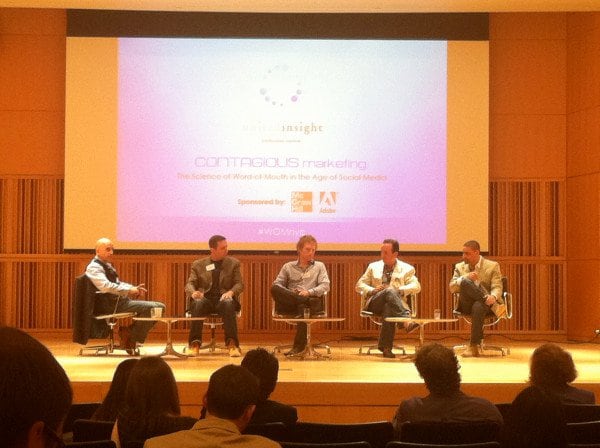The Science of Creating Shareable Content
Do influencers really exist? How to craft viral content? What is the return on relationships? These questions, among others, were on the table at United Insight’s Contagious Marketing: The Science of Word-of-Mouth in the Age of Social Media conference on June 30th.

The digital marketing conference featured presentations from Jonah Berger (Social Epidemic Professor at UPenn Wharton) and Ted Rubin (CMO at Collective Bias). They were joined by John Andrews (former head of Emerging Media at Walmart), Dave Kerpen (Co-founder and CEO of Likeable Media), and Ruben Quinones, Amsive Digital’s own Director of New Media.
There were so many interesting topics covered at the conference that we’ve decided to spread them out over more than one post. Stay tuned…
How to Create Viral Content
Jonah Berger, marketing professor at Wharton, studies social epidemics from the scientific perspective, most recently exploring why some products an ideas generate more word-of-mouth buzz than others. Together with Katy Milkman, Berger recently authored “What Makes Online Content Viral?” which can be downloaded here.
Berger told the crowd at Contagious Marketing that WOMM is 8.5 to 30 times more effective than traditional media. The reason for this is largely better targeting – we only tell people about things we think they’d be interested in right now. Berger’s research has found that a large number of friends doesn’t translate directly into efficient WOMM – people with more followers do not necessarily have more influence. Berger defines influence as the ability to change behavior; during the panel, he pointed out a better term for what social media marketers traditional define as “influencers” might be “awarers.”
Since influencers don’t influence, Berger says viral messaging depends on the content more than the carriers. He recommends ignoring influentials and crafting contagious content. His recipe for doing so is to consider all ASPECT.
Pay Attention to all ASPECTS When Creating Shareable Content
Advertise itself: How easy is it for customers to see when someone is using your product? Publicly visible products get 8% more WOM. No easy to utilize visual cues? Go with sounds, like Microsoft has with the instantly recognizable Windows boot sound.
Social currency: People share info partially to help others, and partly to look good themselves. Give people something to talk about that will make them look cool. Exclusivity and scarcity help (Gmail or Google+ invites, soft openings) and piggyback your brand onto the motivation for self-display.
Practical value: Dining and tech are among the most viral sections of the NYTimes; sharable content needs to be usable.
Evoke emotion: Make people care to share. It’s about arousal more than emotion – anger, anxiety, and excitement share well; contentment and sadness do not.
Common ground: People won’t share things that are too obscure. Connect your idea to something everyone knows a little about.
Triggered: Apparently hits on Rebecca Black’s infamous “Friday” video peak every Friday. Orange products do better around Halloween. Mentions of cheerios on Twitter are highest in the morning. What things are top of mind and how can you connect them with your brand? Products triggered more frequently get 15% more WOM. Tying your brand to another property can be extremely powerful – have you ever ordered a rum and Pepsi?
Stories: What broader narrative is your idea a part of? Connect your brand to a story and it’s far more likely to be shared. How does your product save the day?
We’ll discuss the role of influencers and return on relationships more in coming posts. What do you think the keys to contagious content are? In your experience, is the message or the messenger more important when it comes to spreading content?





